Homer’s “Iliad” stands as one of the cornerstones of ancient Greek literature and Western literary tradition. Composed during the 8th century BCE, the epic poem delves into the legendary Trojan War, focusing on the wrath of Achilles, the greatest Greek warrior, and the devastating consequences of that wrath. The “Iliad” is not just a war story but a profound exploration of human nature, honor, and the influence of the divine on mortal affairs.
The authorship of the “Iliad” has long been attributed to Homer, though the exact identity of Homer remains a subject of debate. Scholars have speculated that Homer could have been a single poet or a collective figure representing the oral tradition of epic storytelling prevalent in ancient Greece. Regardless, the “Iliad” and its companion piece, the “Odyssey,” have left an indelible mark on literature, inspiring countless works of art, literature, and philosophy throughout history.
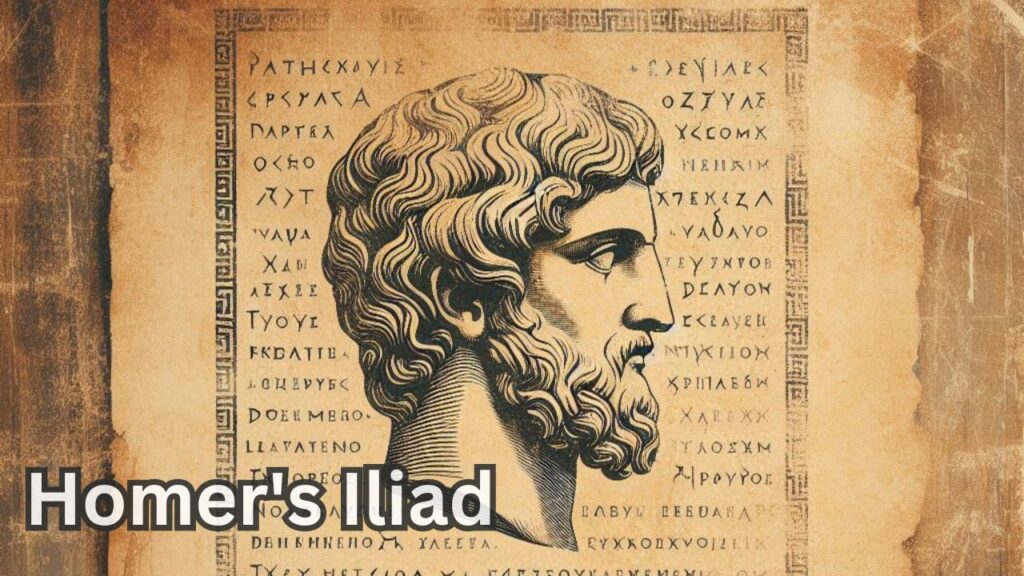
Book 1 of the “Iliad” holds particular significance as it sets the stage for the entire narrative. It introduces the central conflict between Achilles and Agamemnon, which reverberates throughout the epic. This book also establishes the themes of honor, wrath, and divine intervention, which are intricately woven into the fabric of the poem. In this detailed analysis, we will explore the key events, characters, themes, and literary devices present in Book 1 of the “Iliad.”
Table of Contents
- Summary of Book 1
- Character Analysis
- Themes and Motifs
- Literary Devices and Style
- Conclusion
- Related Topic
Summary of Book 1
Invocation of the Muse
The “Iliad” opens with an invocation to the Muse, a traditional feature in epic poetry. Homer calls upon the Muse to inspire him to sing of the “wrath of Achilles,” indicating that this emotion will drive the narrative. This invocation not only sets the tone for the epic but also establishes Achilles’ wrath as the central focus. The Muse is asked to recount the dire consequences of this wrath, which brings great suffering to the Achaeans and leads to the deaths of many warriors, thereby setting the stage for the tragic events to unfold.
Conflict Between Agamemnon and Achilles
The primary conflict in Book 1 arises from a dispute between Agamemnon, the leader of the Greek forces, and Achilles, their greatest warrior. The quarrel begins when Chryses, a priest of Apollo, comes to the Greek camp to ransom his daughter, Chryseis, who has been captured by the Greeks and given to Agamemnon as a war prize. Chryses offers a generous ransom, but Agamemnon arrogantly refuses and dismisses the priest, provoking the wrath of Apollo.
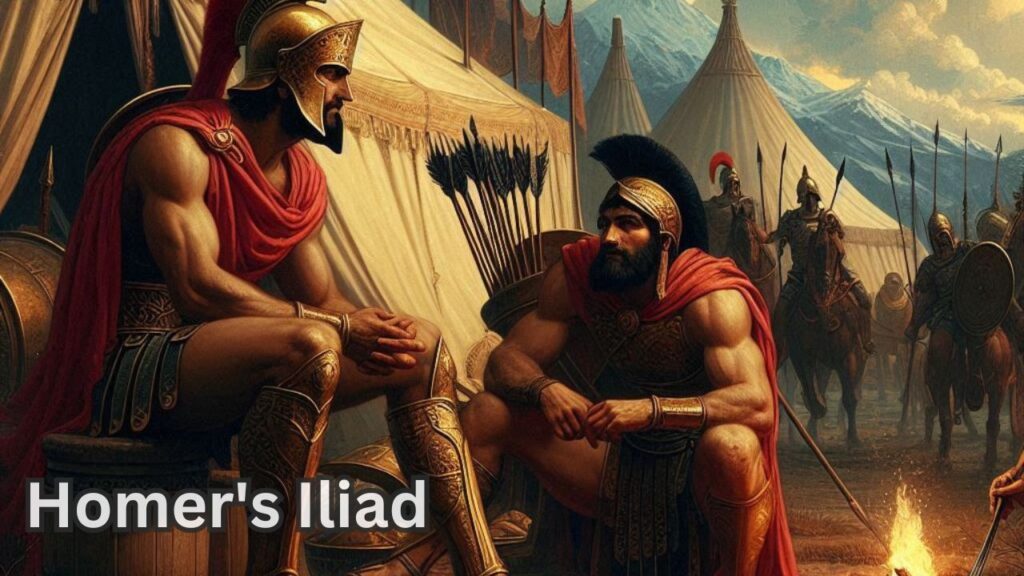
In response to this insult, Apollo unleashes a deadly plague upon the Greek camp, decimating their forces. After nine days of suffering, Achilles calls an assembly to address the crisis. The seer Calchas reveals that the plague is a punishment from Apollo, who demands the return of Chryseis to her father. Reluctantly, Agamemnon agrees to return Chryseis but insists on taking Achilles’ war prize, Briseis, as compensation for his loss.
This demand infuriates Achilles, who feels deeply dishonored by Agamemnon’s actions. In Greek warrior culture, honor and respect are paramount, and to take a warrior’s prize is to strip him of his honor. Achilles threatens to withdraw from the war and return to his homeland, but he is ultimately persuaded by Athena, who intervenes to prevent him from drawing his sword against Agamemnon. Achilles agrees to give up Briseis but vows to no longer fight for Agamemnon, effectively abandoning the Greek cause.
Apollo’s Plague
The plague sent by Apollo is a crucial event in Book 1, as it not only demonstrates the power of the gods but also sets off the chain of events that leads to the conflict between Achilles and Agamemnon. Apollo’s anger is kindled by the disrespect shown to his priest, and his vengeance is swift and deadly. The plague serves as a reminder to the Greeks that the gods are deeply involved in human affairs and that their favor or wrath can determine the course of events.
The divine intervention in this situation also highlights the theme of fate and the gods’ influence on mortal lives. The Greeks are powerless against the plague until they appease Apollo by returning Chryseis. This event underscores the importance of maintaining the gods’ favor and the consequences of hubris, as Agamemnon’s pride leads to the suffering of his entire army.
The Role of the Gods
The gods play an integral role in Book 1, as they do throughout the “Iliad.” Apollo’s actions demonstrate the gods’ ability to influence mortal affairs directly, while Athena’s intervention in the quarrel between Achilles and Agamemnon reveals the gods’ interest in shaping human destinies. Athena prevents Achilles from attacking Agamemnon, thereby averting immediate disaster for the Greek forces. This divine intervention suggests that while the gods have the power to influence events, they also have their own agendas and relationships with mortals.
In the “Iliad,” the gods are portrayed as powerful, capricious beings who are deeply intertwined with the lives of mortals. They take sides in the Trojan War, protect or punish individuals, and often act out of personal motives rather than moral considerations. This portrayal raises questions about the nature of fate and free will, as the gods’ interventions seem to dictate the course of events, leaving mortals to navigate a world where their destinies are often beyond their control.
Character Analysis
Achilles
Achilles is the central character of the “Iliad,” and his actions drive much of the narrative. In Book 1, Achilles is portrayed as a proud and formidable warrior who is acutely aware of his status and honor. His sense of personal honor is paramount, and he reacts with intense anger when he feels that Agamemnon has dishonored him by taking Briseis. This reaction is not merely about the loss of a war prize but about the affront to Achilles’ status as the greatest Greek warrior.
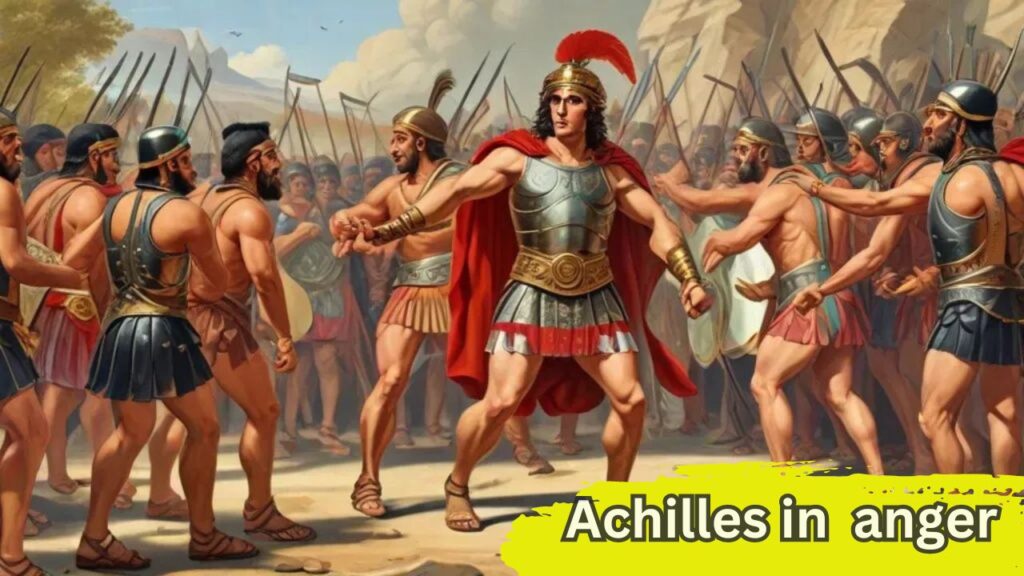
Achilles’ wrath is a defining feature of his character. It is this wrath that propels the plot of the “Iliad” and leads to the eventual downfall of many characters. Achilles is depicted as a complex figure, torn between his pride and his duty to his comrades. His refusal to fight after his quarrel with Agamemnon has dire consequences for the Greek army, showcasing the destructive potential of unchecked anger and pride.
Despite his flaws, Achilles is also a deeply sympathetic character. His sense of betrayal by Agamemnon resonates with readers, and his internal struggle between pride and duty adds depth to his character. Achilles’ wrath, while destructive, is also a response to the injustices he perceives, making him a tragic figure caught in the web of fate and human emotion.
Agamemnon
Agamemnon, as the leader of the Greek forces, is portrayed as a figure of authority, but his leadership is marred by arrogance and a need to assert his dominance. His refusal to return Chryseis to her father without compensation and his subsequent demand for Briseis reveal his pride and concern for his status. Agamemnon’s actions are driven by a desire to maintain his authority and superiority over the other Greek leaders, particularly Achilles.
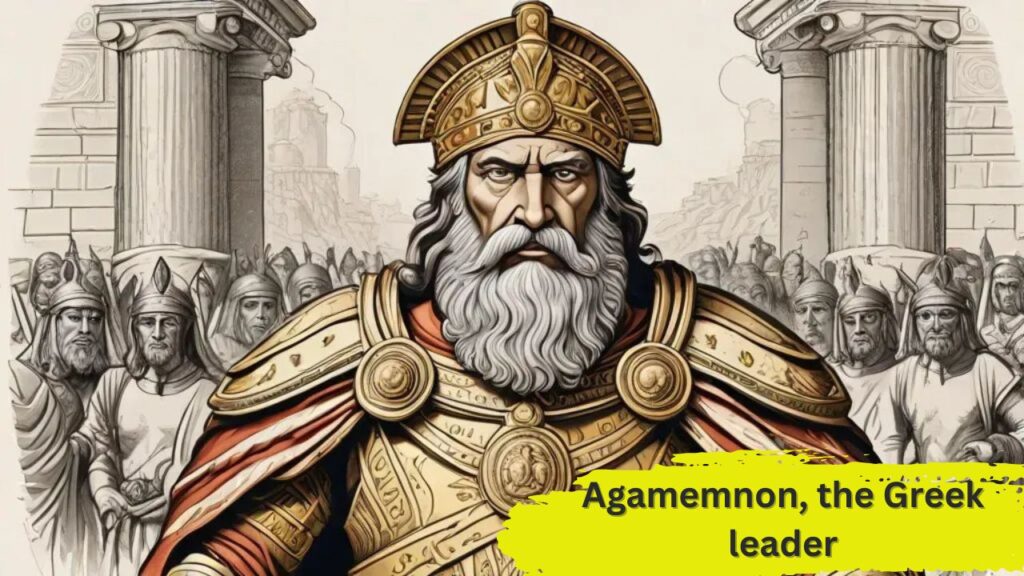
However, Agamemnon’s leadership style is flawed. His decision to take Briseis from Achilles not only alienates his greatest warrior but also weakens the Greek forces. Agamemnon’s inability to consider the consequences of his actions reflects his shortcomings as a leader. He prioritizes his personal honor over the well-being of his army, leading to internal conflict and discord among the Greeks.
Agamemnon’s character is also marked by a sense of entitlement and a lack of empathy. His treatment of Chryses and his dismissive attitude towards Achilles highlight his arrogance and inability to understand the perspectives of others. These traits contribute to the tension between him and Achilles, setting the stage for the epic’s exploration of leadership, authority, and the responsibilities of those in power.
Other Key Figures
Chryses: Chryses plays a pivotal role in the events of Book 1 as the catalyst for the conflict between Agamemnon and Achilles. His plea for the return of his daughter and the subsequent punishment of the Greeks by Apollo underscore the importance of respect for the gods and their representatives. Chryses’ character embodies the themes of piety and the consequences of disrespecting divine authority.
Calchas: Calchas, the seer, is another significant figure in Book 1. His role is to reveal the cause of the plague and the will of the gods, making him an important intermediary between the divine and mortal realms. Calchas’ prophecy sets the stage for the conflict between Agamemnon and Achilles, highlighting the tension between knowledge and power. His character also underscores the importance of understanding and interpreting the will of the gods in the “Iliad.”
Athena and Apollo: The gods Athena and Apollo play crucial roles in the events of Book 1. Apollo’s wrath and the resulting plague demonstrate the power of the gods to influence mortal affairs. Athena’s intervention to prevent Achilles from attacking Agamemnon reveals the gods’ active involvement in guiding and shaping human destinies. These divine figures are central to the themes of fate, power, and the relationship between mortals and gods in the “Iliad.”
Themes and Motifs
Honor and Glory (Kleos)
Honor and glory, or kleos, are central themes in the “Iliad,” particularly in Book 1. For the Greek warriors, honor is of utmost importance, and their actions are often driven by the desire to achieve glory and be remembered. Achilles’ sense of honor is deeply wounded when Agamemnon takes Briseis from him, as this act is seen as an affront to his status and reputation. The conflict between personal honor and collective duty is a recurring theme in the “Iliad,” and Book 1 sets the stage for this exploration.
Achilles’ reaction to Agamemnon’s actions is rooted in the warrior code, which places a high value on respect and recognition. The loss of Briseis is not just the loss of a prize but a blow to Achilles’ honor and, by extension, his kleos. This concept of kleos drives much of the action in the “Iliad,” as warriors seek to achieve glory through their deeds on the battlefield. However, the pursuit of honor often leads to conflict and tragedy, as seen in the quarrel between Achilles and Agamemnon.
Wrath (Menis)
The theme of wrath, or menis, is introduced in the very first line of the “Iliad” and remains a central focus throughout the epic. Achilles’ wrath is the driving force behind the events of Book 1 and serves as the catalyst for the larger conflict in the poem. His anger at Agamemnon’s insult leads him to withdraw from the battle, a decision that has far-reaching consequences for the Greek forces.
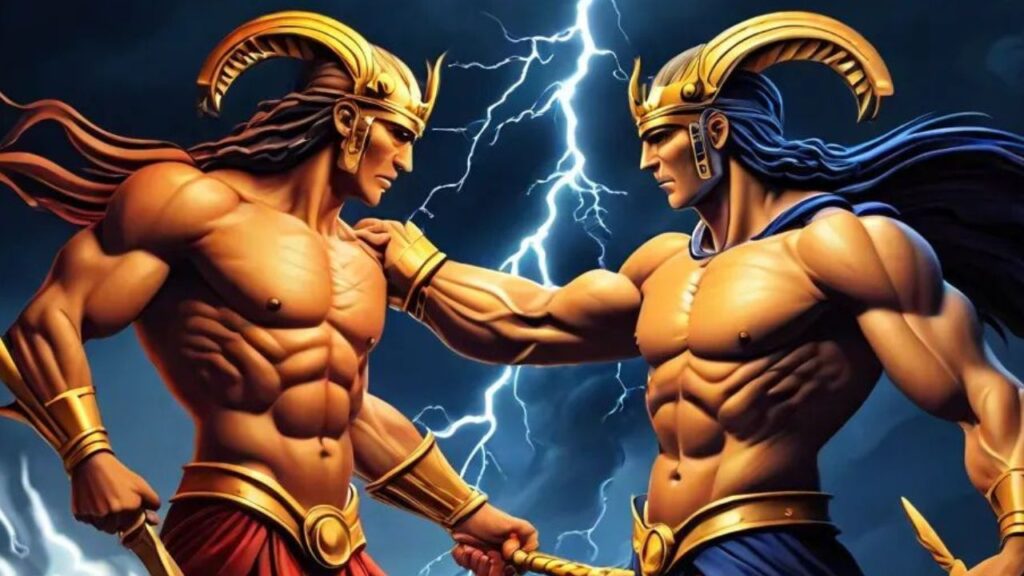
Achilles’ wrath is portrayed as a powerful and destructive force, one that consumes not only the individual but also those around him. This theme explores the impact of unchecked anger on both personal relationships and larger societal dynamics. The destructive nature of Achilles’ wrath foreshadows the tragedies that will unfold as a result of his actions, emphasizing the theme of the consequences of uncontrolled emotions.
Fate and the Role of the Gods
Fate and the role of the gods are intertwined themes in the “Iliad,” with Book 1 providing early examples of how these forces shape the lives of mortals. The gods in the “Iliad” are not distant figures but active participants in the events of the Trojan War. Their interventions, whether in the form of Apollo’s plague or Athena’s restraint of Achilles, demonstrate the inescapable influence of the divine on human affairs.

The theme of fate is closely linked to the gods’ involvement in the war. The characters in the “Iliad” are often aware of their fates but are powerless to change them. This tension between free will and predestined outcomes adds a layer of complexity to the narrative, as characters struggle to assert their agency in a world where the gods’ will often prevails. Book 1 introduces this theme through the actions of the gods and sets the stage for the exploration of fate and destiny throughout the epic.
Leadership and Authority
The theme of leadership and authority is central to the conflict in Book 1. Agamemnon, as the leader of the Greek forces, represents the authority that is challenged by Achilles. The quarrel between the two leaders raises questions about the nature of leadership and the responsibilities that come with power. Agamemnon’s actions demonstrate the dangers of authoritarian leadership, where personal pride and the desire for control override the well-being of the group.
Achilles’ defiance of Agamemnon’s authority reflects the tension between individual honor and collective responsibility. This theme is explored throughout the “Iliad,” as different characters navigate the challenges of leadership and the consequences of their decisions. Book 1 sets the stage for this exploration by highlighting the conflict between Agamemnon’s authority and Achilles’ sense of personal honor, a conflict that will have significant ramifications for the Greek forces.
Literary Devices and Style
Homeric Similes
One of the most distinctive features of Homeric style is the use of extended similes, known as Homeric similes. These similes often compare a character’s actions or emotions to natural phenomena or everyday activities, creating vivid and memorable imagery. In Book 1, Homeric similes are used to enhance the narrative, providing readers with a deeper understanding of the characters’ experiences.
For example, Achilles’ wrath is compared to a raging fire, emphasizing the intensity and destructive potential of his anger. These similes serve not only to embellish the narrative but also to connect the characters’ experiences to universal themes, making the epic accessible to a wide audience. The use of Homeric similes is a hallmark of Homer’s poetic style and contributes to the richness of the “Iliad.”
Epithets
Another characteristic feature of Homeric poetry is the use of epithets—descriptive phrases that are repeatedly attached to characters’ names. Examples include “swift-footed Achilles” and “rosy-fingered Dawn.” These epithets serve several purposes in the “Iliad.” They help maintain the meter of the poem, reinforce key characteristics of the characters, and create a sense of continuity and familiarity for the audience.
In Book 1, epithets are used to highlight important aspects of the characters. For instance, “lord of men Agamemnon” emphasizes Agamemnon’s authority, while “godlike Achilles” underscores Achilles’ exceptional status among the Greeks. The repetition of these epithets throughout the poem reinforces the characters’ identities and adds to the epic’s formal structure.
Foreshadowing
Foreshadowing is a literary device used by Homer to build anticipation and hint at future events. In Book 1, several instances of foreshadowing set the stage for the events that will unfold later in the “Iliad.” For example, Achilles’ vow to withdraw from battle foreshadows the suffering that the Greek forces will endure without their greatest warrior. Additionally, the plague sent by Apollo serves as a warning of the divine retribution that will follow any further disrespect of the gods.
Foreshadowing in the “Iliad” creates a sense of inevitability and highlights the theme of fate. The characters’ actions are often shown to have consequences that will play out later in the epic, emphasizing the interconnectedness of events and the inescapable nature of destiny.
Imagery and Symbolism
Imagery and symbolism are also prominent in Book 1 of the “Iliad.” The scepter of Agamemnon, for example, symbolizes his authority as the leader of the Greek forces. When Achilles swears by the scepter that he will no longer fight for Agamemnon, the act is loaded with symbolic meaning, representing the breakdown of authority and the impending chaos within the Greek camp.
The imagery of the plague, with its devastating effects on the Greek soldiers, symbolizes the consequences of hubris and the power of the gods to punish those who defy them. The vivid descriptions of the plague-ridden camp create a sense of despair and highlight the vulnerability of mortals in the face of divine wrath. Through such imagery and symbolism, Homer adds depth to the narrative and reinforces the central themes of the “Iliad.”
Conclusion
Book 1 of Homer’s “Iliad” is a powerful introduction to the epic, setting the stage for the exploration of themes such as honor, wrath, fate, and leadership. The quarrel between Achilles and Agamemnon serves as the catalyst for the events that follow, illustrating the destructive potential of pride and anger. The involvement of the gods in mortal affairs adds a layer of complexity to the narrative, raising questions about the nature of fate and the role of the divine in human lives.
Through the use of literary devices such as Homeric similes, epithets, and foreshadowing, Homer creates a rich and immersive narrative that has captivated audiences for centuries. The themes and characters introduced in Book 1 resonate throughout the “Iliad,” making it a timeless exploration of the human condition and the consequences of our actions.
As we continue to study and appreciate the “Iliad,” Book 1 remains a crucial focus for understanding the epic’s larger themes and the motivations of its characters. The enduring legacy of the “Iliad” is a testament to its profound insights into the complexities of human nature and the universal truths that continue to resonate across time and cultures.
1 thought on “Iliad Book 1: BBMKU Notes, Themes, and Character Insights”